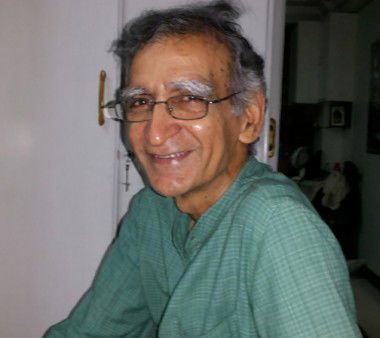Articles features
Color Coding of Communal Politics

As per the reports from Ahmadabad (12th April 2015) the
uniform at Shahpur School; where most of the students are Hindus; is
saffron and the color of uniform in Dani Limda school where
almost all the students are Muslims; the color is green. This is
absolutely shocking! One knew that the ghettoization of Muslims in Ahmadabad is probably the
worst in the country but whether the things will go this far was unbelievable.
The process of communalization which worsened after the 2002 Gujarat
carnage is seeing a new low with incidents like this one.
Surely this is the most blatant expression of
communalisation- segregation-ghettoisation physical and psychological, which
the country as a whole and Gujarat in the most
extreme form, is witnessing. While the communities do many times prefer to stay
in the localities frequented by their likes, the situation in most of the north
Indian metros and even to some extent in smaller towns also is very bad. The
segregation of communities along religious lines has gone up to the frightening
levels all through. In Ahmadabad,
particularly post 2002 carnage the majority of nearly 12% of Muslim population
has been forced to live in Juhapura and Shah Alam area, both predominantly
Muslim areas. Irrespective of the socio-economic profile the Muslims are not
permitted to buy houses in mixed localities. The banks don’t extend their
credit card facilities in these areas and neither does eating outlets deliver
pizzas etc. in these localities.
In India
the phenomenon of ghettoisation of Muslim community has run parallel and as an
aftermath of the communal violence. Once the violence occurs in a particular
city that city is affected very severely and its fallout is seen in other
cities as well. In the cities where major communal violence has been witnessed,
this has been the invariable accompaniment. The cities like Mumbai, Bhagalpur, Jamshedpur,
Muzzafarnagar in particular. In cities like Delhi also this phenomenon is clearly
discernible to the extent that even the Muslim faculty members of JNU, the
prestigious University with the tag of a liberal institution, also prefer to
live in the Muslim majority areas. The builders in the major cities make it a
point of not selling the housing units to the members of minority community. I
know of a faculty member of the prestigious Tata Institute of Social Sciences
Mumbai being denied the house on the ground of religion.
Talking of Mumbai, it is probably the most cosmopolitan city
with high cultural diversity. In this city the famous film star and social
activist Shabana Azmi was denied the house in a mixed locality and similar was
the plight of another well known film star Emran Hashmi. There is a long chain
of phenomenon leading to such situations where the religion becomes the central
marker of one’s identity, overtaking the national identity, and so the right to
access to housing of one’s choice is practically ruled out. These are unwritten
rules which are part of social practices.
As far as ghettoization is concerned, currently we are faced
with a debate featuring this phenomenon as talks are on to plan make separate
colonies for Kashmiri Pandits in Kashmir
Valley. This plan is
being opposed by different quarters as this will definitely lead to ghetto like
situation for Pandits. The Kashmiriyat culture, the core point of Muslim-Hindu
amity in the Valley has already been undermined due to the strife raging in the
valley from last over two decades. On the top of that such a scheme of the Government
will further enhance the divisive spirit in the state.
As such segregation of communities along caste/sect lines is
a dominant feature in Pakistan
as well, as the dominant political discourse has revolved around complex
sectarian divides. The ghettoization of African Americans in United States goes back to the injustices done
to these sections in America.
Lately one hears a lot about the urban ghettoes in countries like where the
immigrants from ex-colonies, not getting their due in the society subsist in
the in the poorer areas.
How do we deal with such a situation where the divisiveness
created by communal politics is ruling the roost? On a visit to Singapore I saw
the massive housing colonies in different residential clusters. I was told that
within these housing complexes, there is an quota system of allotment of
housing units in the same complex along ethnic lines. Different ethnic groups,
Malays, Chinese and Tamils have been allotted certain percentage according to
their proportion in the population. This does encourage different groups to
interact with each other on various occasions and promotes amity between them.
What do we do in the face of a situation where the schools are choosing
uniforms according to the religion of the children, and how come the percentage
of children is overwhelmingly Muslim or Hindu in particular areas? This is due
to physical segregation and is contrary to the spirit of communal harmony and
the values ingrained in the basics of Indian Constitution, the spirit of Fraternity.
One has to counter the myths, biases and prejudices about the ‘other community’
as these stereotypes form the base of communal violence, which in turn paves
the way for segregation and ghettoization which further leads to ‘cultural
demarcation’, the way these two schools show. What type of future society we
can envisage with such stereotypes entering into our education system. The
physical and emotional divides which are coming up are detrimental to the unity
of the nation as a whole.
The communal violence has brought to fore the religious identity without bring in the values of tolerance and acceptance for the ‘other’. I remember having watched V.Shantarams’ 1946 classic Padosi (neighbor) and leaving the theatre with moist eyes, wondering whether Hindus and Muslims can ever live like this again, whether the composite culture which India inherits has any chance of survival in the prevalent divisive political scenario!



































